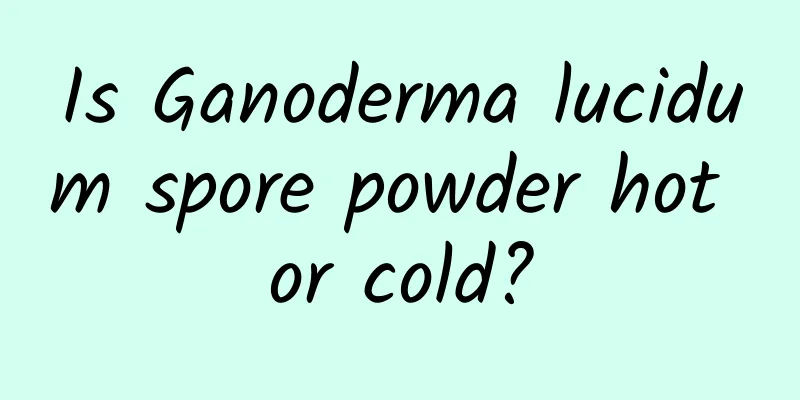The efficacy and function of Dula

|
Dula is a very common type of traditional Chinese medicine and is also a frequently used medicine. It has unique effects and functions in treating many diseases. Here we will tell you in detail about the effects of some traditional Chinese medicines. 【English name】 Root of Common Triplostegia [Other names] Du La ginseng, Dula, Tubaijiang, Duidui ginseng, Radish ginseng, Baidula, Chicken thigh, One piece of Artemisia, Radish Dula, Tuyang ginseng, Shuangxiang [Source] Medicinal material source: It is the root of the plant Polygonum multiflorum of the family Dipsacus asper. [Original form] Southwestern capsule flower, weak perennial upright herb, 15-30(-40)cm high. The rhizome is slender, quadrangular, with 2-6 nodes, internodes 0.5-2cm long, and adventitious roots on the nodes. The main root is usually 2 parallel branches, slightly fleshy, nearly hammer-shaped, 3-15cm long, 2-3mm in diameter, brown, with a square stem, grooved, nearly smooth or slightly sparsely pubescent. Leaves nearly basal, forming a false marginal seat, 3-6 pairs of leaves on shortened nodes, or scattered in the lower part of the stem, 3-8cm long including petiole. Leaf blade obovate-lanceolate, two to four times pinnate-lobed, central lobe larger, lobes on both sides gradually smaller, with irregular shallow cracks or serrations on the edges, base gradually narrowing to a petiole 1-3cm long; dark green above, sparsely white gradually losing hairs, pale green below, with sparse soft hairs along the veins; leaves on the upper part of the stem gradually smaller, shallowly lobed, sessile. Flowers in loose narrow oblong panicles at the top of the stem; bracts 1 pair on each branch, 2-4mm long, with 1 midrib, sparsely pubescent on margins, short pedicels, up to 1mm long when fruiting; involucre 4-lobed, lobes lanceolate, 1.5-2mm long, densely covered with purple glandular hairs on the outside; calyx tube urticate, about 1.5mm long, with 8 ribs, apex contracted into 8 tiny tooth-like or serrated eaves; corolla white or pink, 3-4(-5)mm long, short funnel-shaped, 5-lobed, lobes obtuse at apex, nearly actinosymmetric; stamens 4, slightly protruding outward, anthers introverted, white filaments erect, 5mm long, inserted near the mouth of the corolla; style slightly longer than stamens, 2mm long, straight, ovary enclosed in the involucre (capsule), achenes enclosed in the capsule (capsule) when fruiting 3-4mm long, covered with glandular hairs on the outside, 4-lobed, lobes apex long acuminate, many hooks. Flowering and fruiting period is from July to October. [Habitat distribution] Ecological environment: Growing under forests at an altitude of 1500-4000m, beside streams, on hillside grasslands, meadows and roadsides at the edge of forests. [Properties] The dried roots are strip-shaped or spindle-shaped, mostly single-branched, with few branches and slightly similar to Aconitum kusnezoffii, 3-7cm long and 0.9-1.5cm in diameter. The surface is tan or gray-brown, with coarse and irregular longitudinal wrinkles and small raised boil scars. The reed head is cut flat, with traces of residual stems. The tail gradually becomes smaller, with a blunt or slightly pointed tip, and is sometimes broken. The texture is firm and fibrous. It tastes pungent and is poisonous, so do not taste it. The best roots are those that are thick, uniform and fleshy. 【Nature and flavor】 Sweet; slightly bitter; slightly warm 【Entry】 Lung; spleen; kidney meridian 【Functions and indications】Warms the kidney and replenishes Qi; promotes blood circulation and stops bleeding. Dizziness due to weakness; chronic cough due to asthenia; food accumulation due to spleen deficiency; low back pain due to kidney deficiency; leucorrhea; impotence; infertility; rheumatic heart disease; bleeding due to trauma [Usage and Dosage] For oral use: decoct in water, 15-30g; or stew with meat. For external use: grind appropriate amount into powder and sprinkle. [Discussions by various scholars] 1. "Sichuan Traditional Chinese Medicine Records": warms the kidney and replenishes Qi, and relieves tobacco toxicity. Treats chronic cough due to deficiency and fatigue. 【Excerpt】 Chinese Materia Medica The article introduces the effects and functions of Dula in detail. We hope that everyone can remember its common effects, which will help us to use Dula correctly in our lives. Dula can effectively improve our physical fitness and is very beneficial to improving our body immunity. |
<<: The efficacy and function of Tung Blossom
>>: Cardamom flower effects and functions
Recommend
What are the effects of Chuanbei
Although Chuanbei has a very good effect of clear...
The efficacy and function of Clematis
Nowadays, our living standards are constantly imp...
The turtle is lying on its back, can it still turn over by itself?
In his crosstalk "On Dreams", Guo Degan...
How to eat medicinal beans and their effects
There are many ways to eat yam beans. You can coo...
The efficacy and function of lemon eucalyptus
The essence of traditional Chinese medicine is to...
The efficacy and function of the root of Thuja palm
The root of Thuja palmii is a kind of traditional...
Benefits of red dates and wolfberry wine
Red dates and wolfberries are very common medicin...
The efficacy and function of Jiuxiancao
There are many kinds of common Chinese herbal med...
The efficacy and function of guava seeds
Guava seeds have a long history, and until now, g...
Rheumatic bone pain, why the prediction is more accurate than the weather forecast!
"My joints hurt when it rains, it's even...
(Yu Peng) The efficacy and function of fish gills
As for (Yu Peng) fish gills, I think some people ...
The efficacy and function of chicken shit white
Since Chinese medicine has fewer side effects, mo...
Dress like this to stay healthy when you travel on holiday! | Tips for healthy travel during the May Day holiday
Source: Healthy China Planning: Tan Jia, Wang Nin...
Green bean soup turns red and is on the hot search again. 3 factors will affect the color of the soup. 3 methods to teach you how to make green green bean soup
The topic of mung bean soup turning red has once ...
The efficacy and function of Astragalus tea
Astragalus is a traditional Chinese medicine that...









